Tom's Hardware Verdict
Adata’s XPG Gammix S70 is fast and features almost everything you could want from a high-end PCIe Gen4 NVMe SSD, but the heatsink is a bit restrictive and not quite as refined as our current best picks.
Pros
- +
+ Very fast sequential performance
- +
+ High endurance
- +
+ AES 256-bit hardware encryption
- +
+ Black PCB + Heatsink
- +
+ 5-year warranty
Cons
- -
It may be physically incompatible with some motherboards
- -
High idle power consumption on the desktop
- -
Slow write speeds after the SLC cache fills
- -
Pricey
Why you can trust Tom's Hardware
Dishing out blisteringly fast sequential speeds of up to 7.4 / 6.4 GBps, Gammix S70 touts some of the fastest performance ratings that we have seen from an NVMe SSD. Yet, it isn’t produced by Samsung or WD, and surprisingly, it isn’t even powered by a Phison controller. Instead, Adata’s XPG Gammix S70 uses a high-end NVMe SSD controller from InnoGrit, a much smaller fabless IC design company.
InnoGrit isn’t a big name when most think of flash controllers, at least not compared to Phison, Silicon Motion, and Marvell. However, the company is far from inexperienced in controller architecture design and engineering. In fact, its co-founders have years of experience in the industry and have created a compelling product line of SSD controllers since opening in 2016.
Thanks to InnoGrit’s IG5236, a robust PCIe 4.0 eight-channel NVMe SSD controller, the company secured a contract with Adata to create the XPG Gammix S70. With this beast of a controller at its core, the S70 could potentially be the fastest SSD on the market. But it faces tough competition from Samsung, WD, and other competitors that pack Phison’s competing E18 SSD controller, like the Corsair MP600 Pro and Sabrent Rocket 4 Plus, to name a few.
Specifications
| Product | Gammix S70 1TB | Gammix S70 2TB |
|---|---|---|
| Pricing | $199.99 | $399.99 |
| Capacity (User / Raw) | 1024GB / 1024GB | 2048GB / 2048GB |
| Form Factor | M.2 2280 | M.2 2280 |
| Interface / Protocol | PCIe 4.0 x4 / NVMe 1.4 | PCIe 4.0 x4 / NVMe 1.4 |
| Controller | InnoGrit IG5236 | InnoGrit IG5236 |
| DRAM | DDR4 | DDR4 |
| Memory | Micron 96L TLC | Micron 96L TLC |
| Sequential Read | 7,400 MBps | 7,400 MBps |
| Sequential Write | 5,500 MBps | 6,400 MBps |
| Random Read | 350,000 IOPS | 650,000 IOPS |
| Random Write | 720,000 IOPS | 740,000 IOPS |
| Security | AES 256-bit encryption | AES 256-bit encryption |
| Endurance (TBW) | 740 TB | 1,480 TB |
| Part Number | AGAMMIXS70-1T-C | AGAMMIXS70-2T-C |
| Warranty | 5-Years | 5-Years |
Adata’s XPG Gammix S70 is available in capacities of 1TB and 2TB, priced at $200 and $400, respectively. The S70 is rated to deliver sequential performance of up to 7.4 / 6.4 GBps and to sustain upwards of up to 650,000 / 740,000 random read/write IOPS with the 2TB model. Like most modern SSDs, the S70 uses SLC caching to absorb the majority of inbound write requests, and in this case, the cache measures one-third of the available capacity.
The controller implements InnoGrit’s proprietary 4K LDPC ECC, end-to-end data protection, and even a RAID engine to ensure reliability and data integrity. As a result, the S70 can endure up to 1,480 TB of data writes within its five-year warranty. Additionally, the S70 supports AES 256-bit hardware-accelerated encryption for those who need both speed and data security too.
Adata has also said this drive will feature a fixed build of materials, so the components, like the NAND and SSD controller, will remain the same throughout the life of the product.
A Closer Look
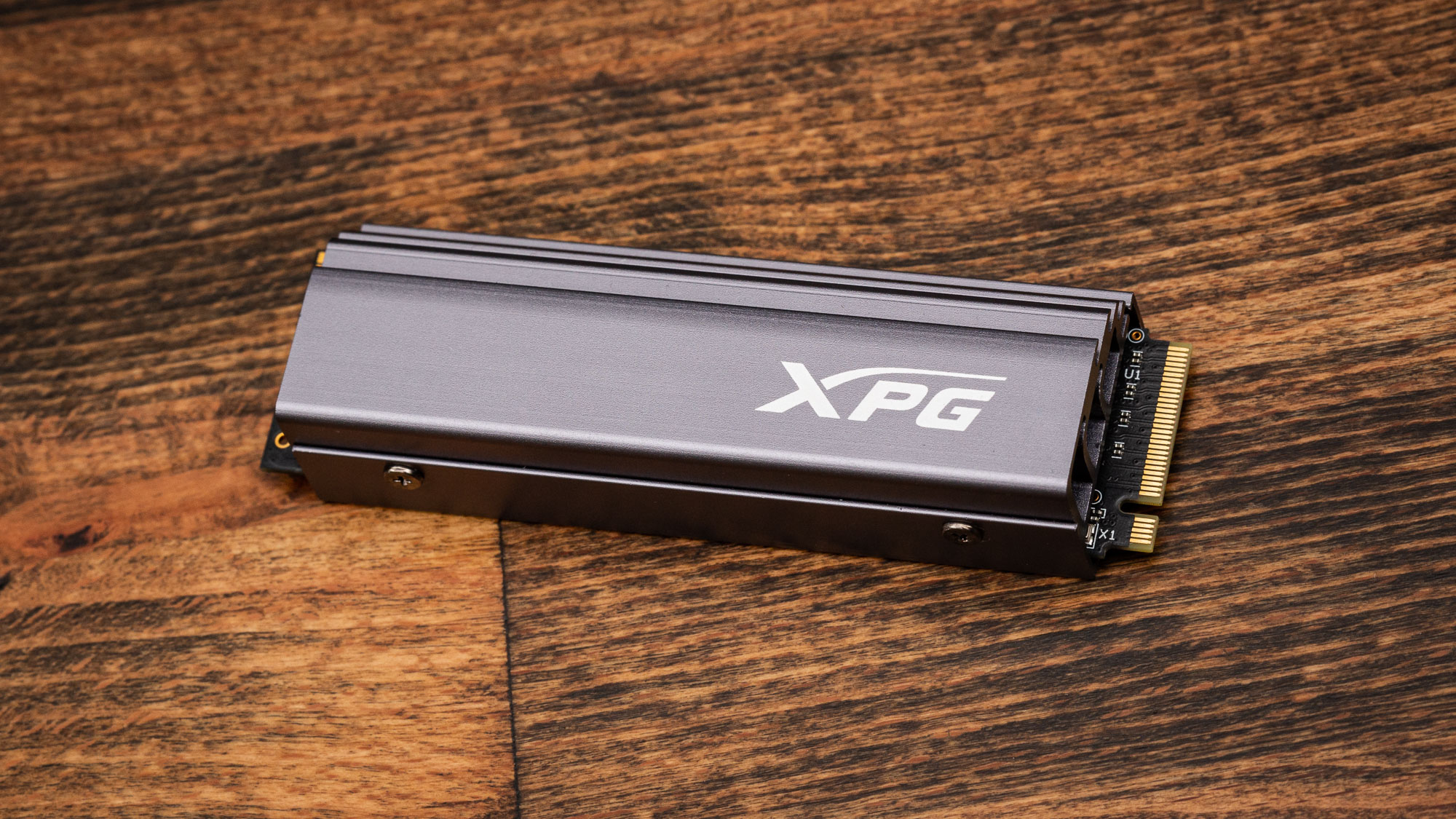
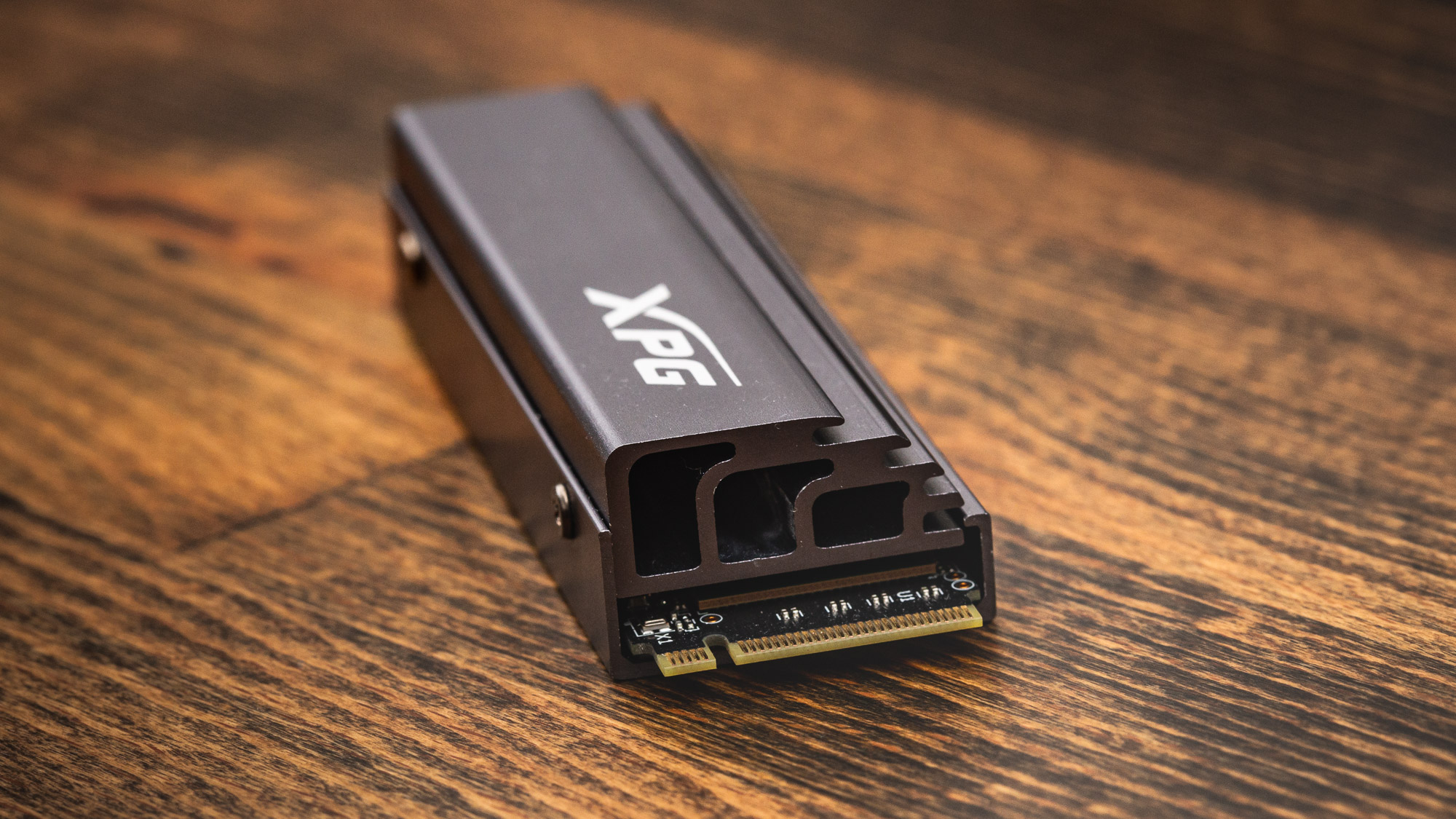
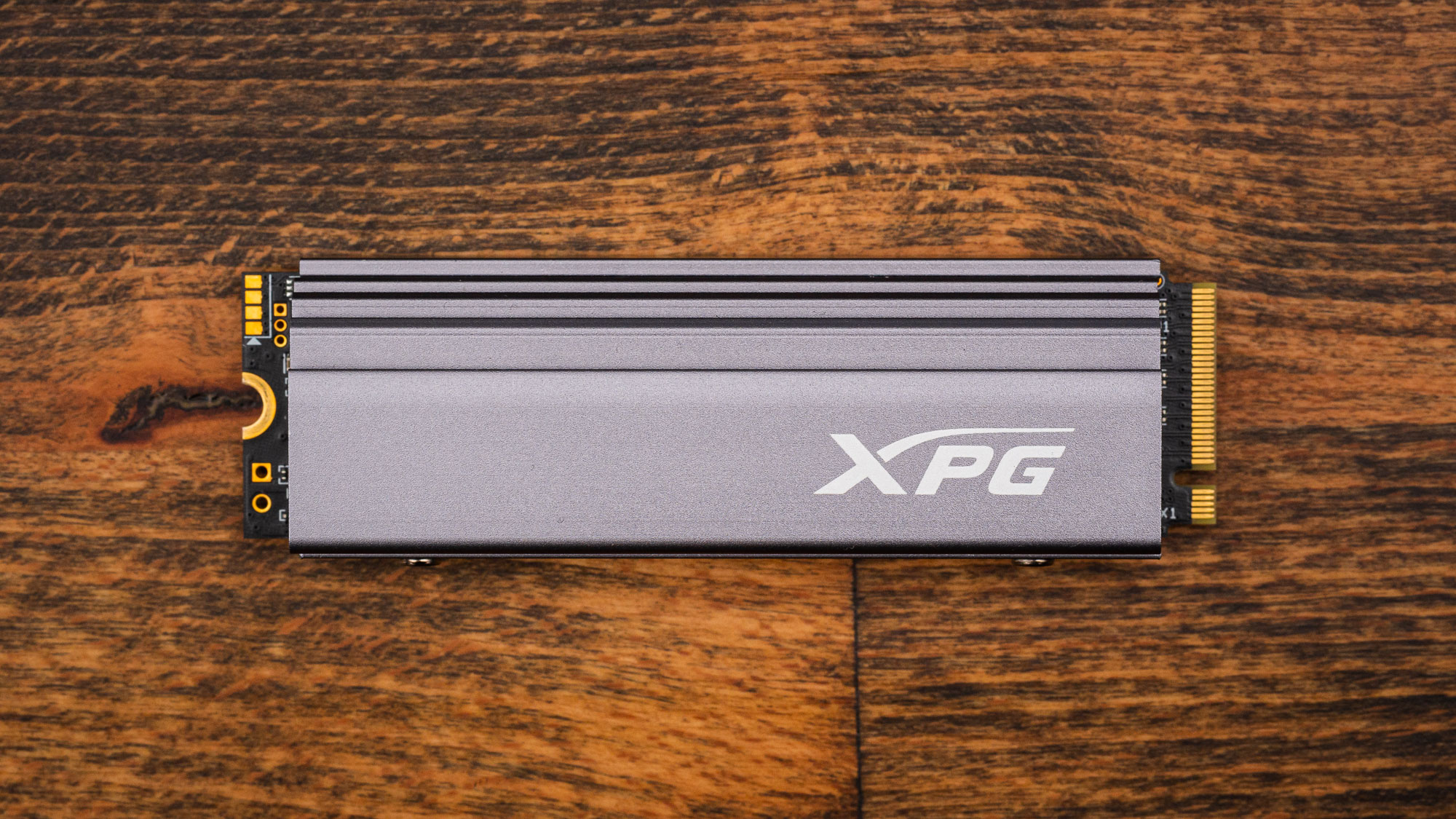
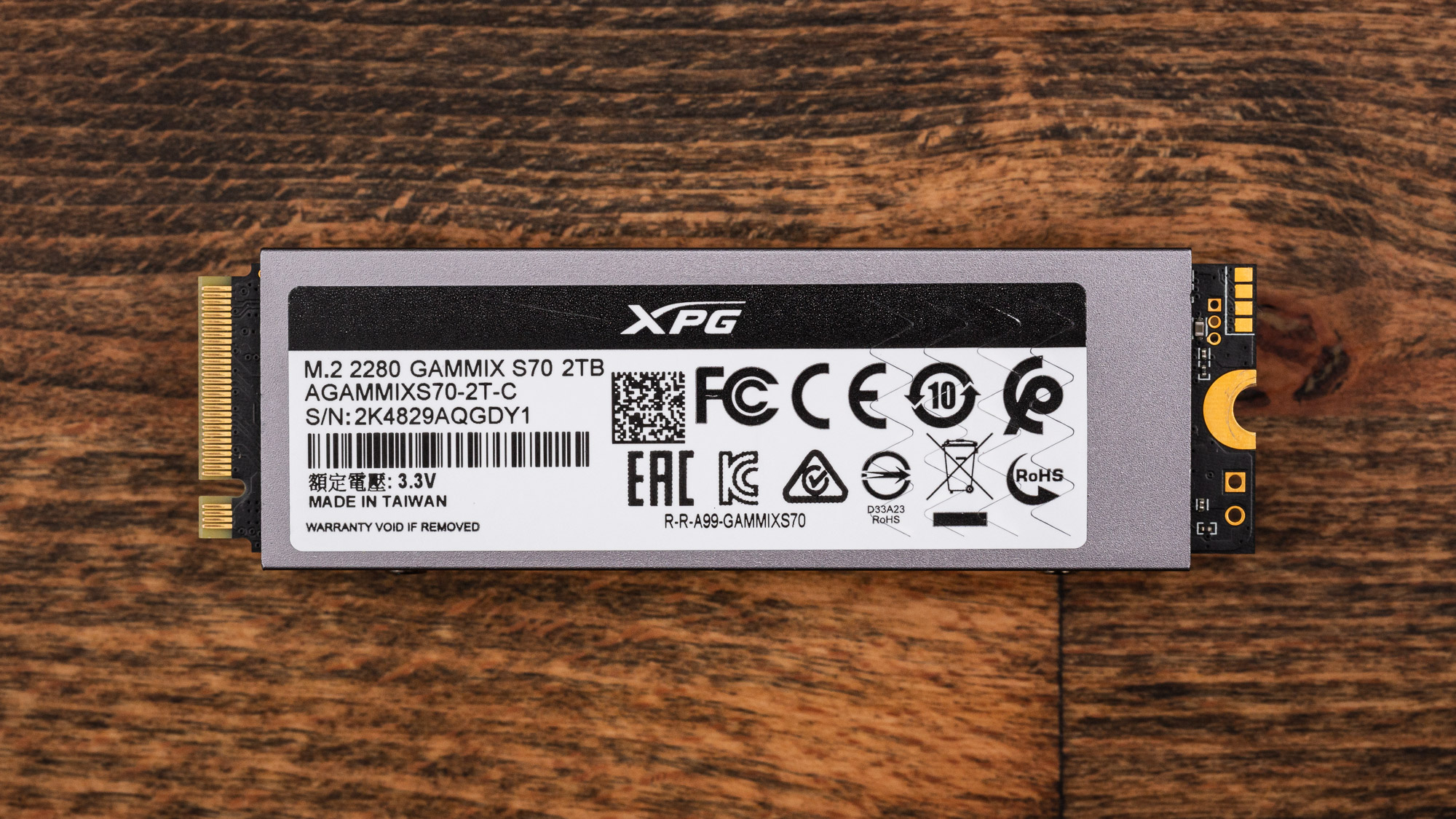
Adata’s XPG Gammix S70 comes in an M.2 2280 double-sided form factor and is equipped with a very large aluminum heatsink to keep “cool in the heat of battle,” as the company’s marketing department says. Adata claims that the heatsink reduces the SSD’s temperatures by up to 30%. While potentially effective, with the heatsink measuring 24.3 x 70 x 15 mm, its tall and wide footprint may lead to compatibility issues, as was the case with our Asus ROG X570 Crosshair VIII Hero (WiFi).
The S70’s heatsink prevents the SSD from fitting into the motherboard’s secondary M.2 slot and also prevents the PCIe slot latch below it from locking to secure your add-in card (like a GPU) when placed in the first M.2 slot. Furthermore, if placed in an M.2 slot under a PCI slot, the S70’s thick heatsink may also prevent AICs from slotting completely into the PCIe slot.
Making matters worse, the base of the heatsink is held onto the PCB with a very strong adhesive. If you were planning to remove the heatsink for better compatibility, the adhesive might cause you to damage the PCB by cracking it in half. We don’t recommend doing so.
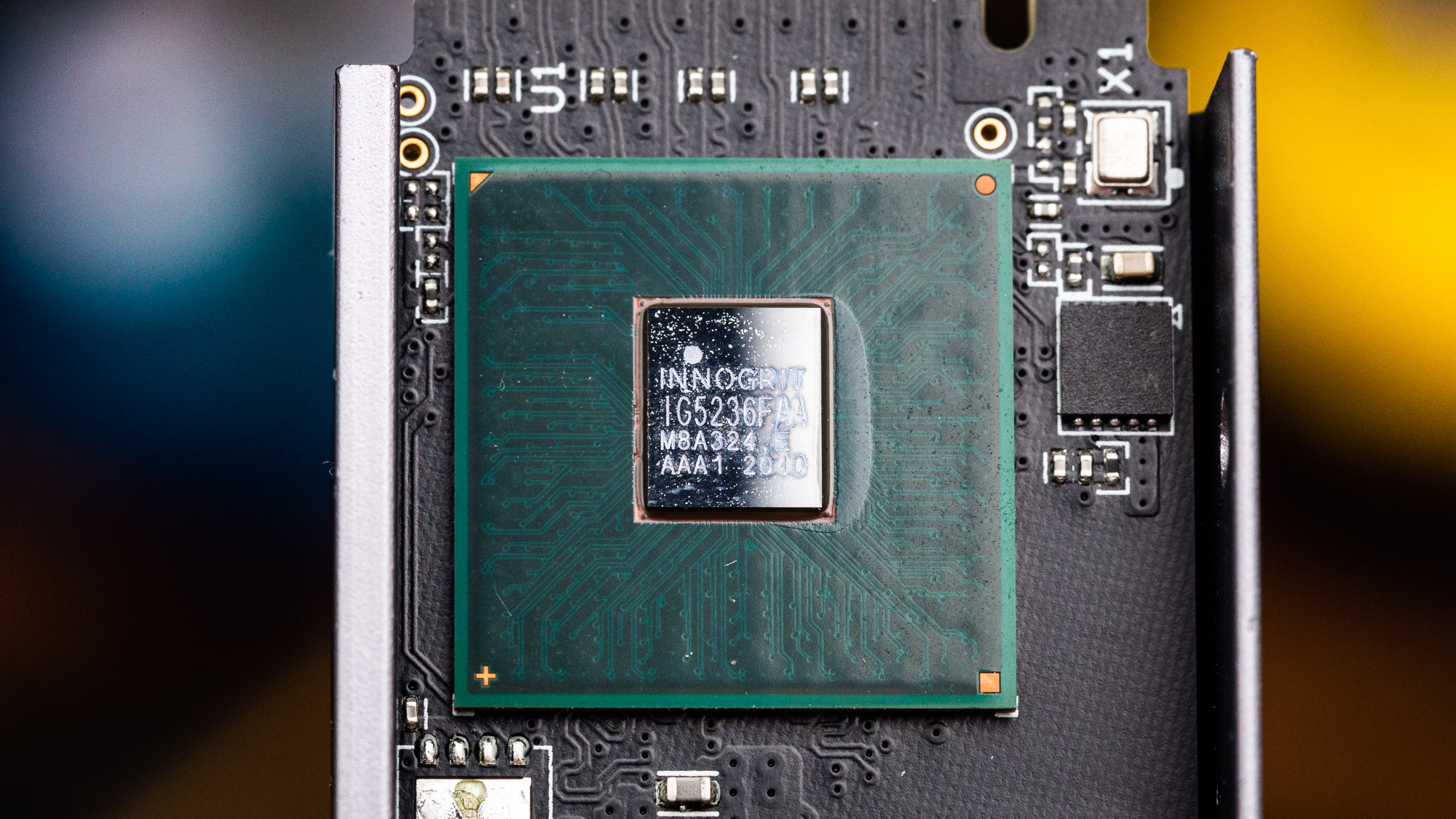

Unlike Adata’s XPG Gammix S50 Lite, the S70 comes with a much faster NVMe SSD controller. The InnoGrit IG5236, dubbed Rainier, is a capable multi-core PCIe 4.0 x4 NVMe 1.4-compliant SSD controller that’s fabbed on TSMC's 16/12nm FinFET process, which is important to help control power consumption when achieving multi-GB performance figures. It also features client-oriented power management schemes, and Adata claims it consumes as low as 2mW in the L1.2 sleep state.
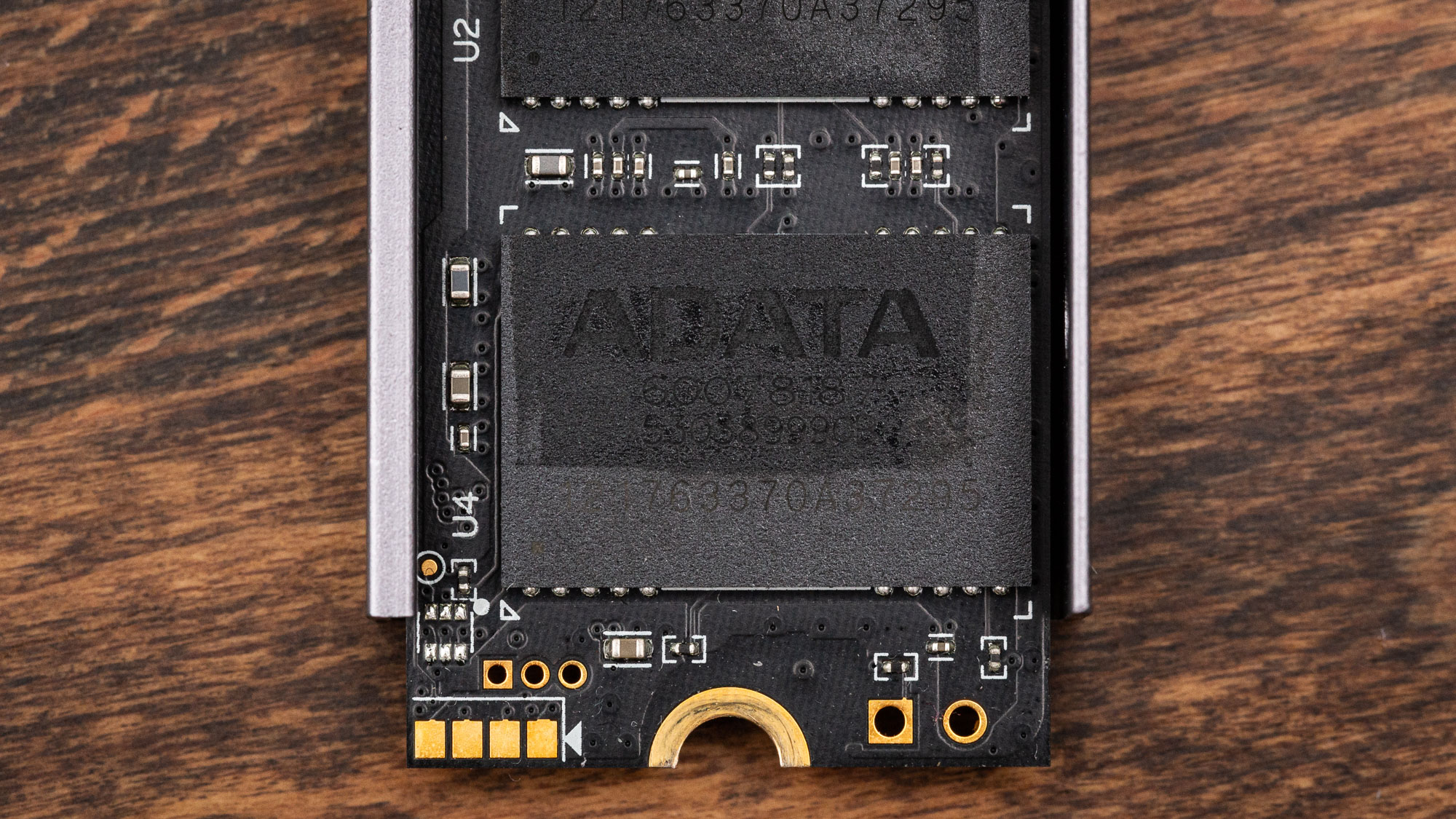
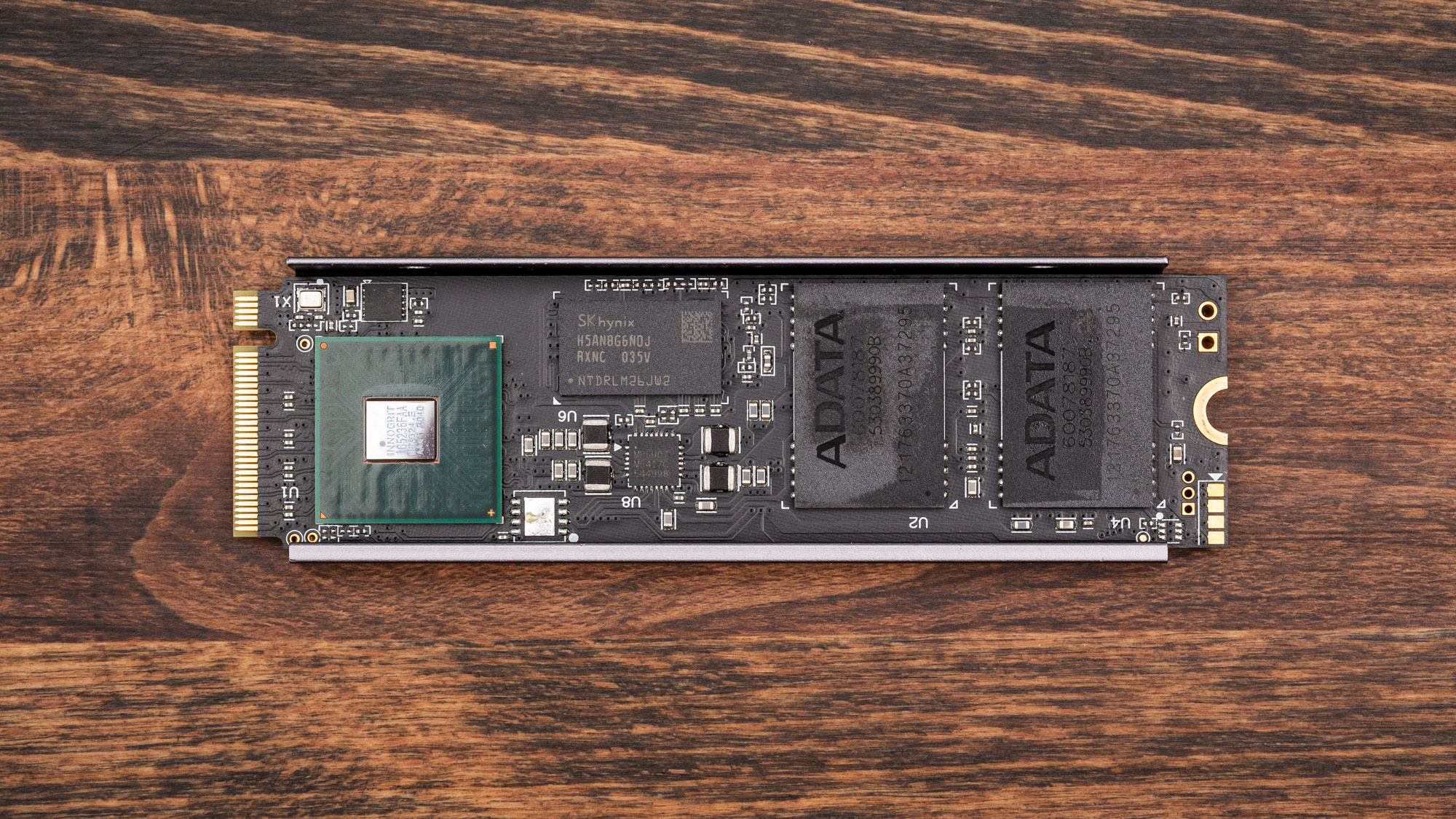
To achieve its fast performance, the S70 leverages a DRAM-based architecture. The controller interfaces with two SK hynix DDR4-3200 DRAM ICs for FTL table mapping and Micron’s 96-layer TLC flash at NV-DDR3 speeds of up to 1,200 MTps spread over eight flash channels. Our 2TB sample contains 32 dies in total — each die has a four-plane architecture that responds very fast to random requests.
Micon’s flash architecture places the periphery circuitry under the flash cell arrays, differing from Samsung’s V6 V-NAND and WD’s BiCS4 to enable high array efficiency and bit density. The CuA architecture also enables redundancies while splitting the page into multiple tiles and groups, enabling fast and efficient random read performance.
MORE: Best SSDs
MORE: How We Test HDDs And SSDs
MORE: All SSD Content

Sean is a Contributing Editor at Tom’s Hardware US, covering storage hardware.
-
Makaveli I like the the size of the SLC cache on this drive.Reply
However the controller swapping shenanigans they were doing on their previous drives have written off any Adata products for me.